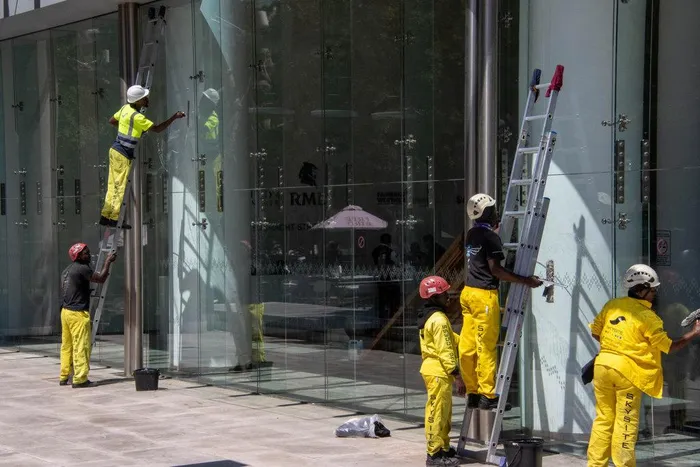
South Africa's economic situation remains dire
Image: Nicola Mawson
South Africa’s economy continues to teeter on the edge of stagnation, with recent data painting a bleak picture of weak growth, declining business turnover, and widespread contractions across key industries.
In Statistics South Africa’s latest wrap of the economy for June, the most telling indicator was gross domestic product, which grew a mere 0.1% in the first three months of the year. Although agriculture was a shining star, it was not enough to counterbalance contractions in major sectors like mining and manufacturing, which dragged overall performance down.
Other industries such as transport, trade, and finance showed some growth on the production side, but it was not broad-based or strong enough to meaningfully shift the needle. On the expenditure side, consumer spending remained resilient, marking its fourth consecutive quarterly increase.
Exports also edged up, aided by a drawdown in inventories. However, these gains were offset by rising imports, declining government spending, and a sharp slowdown in infrastructure investment, all critical components for sustainable long-term growth.
An added blow to the economy was formal business turnover falling sharply. Data from Statistics South Africa’s Quarterly Financial Statistics survey shows that total turnover dropped by 4.7% in the first three months of the year compared with the final quarter of 2024.
Six out of eight industry categories reported declines, with only personal services and construction showing any signs of life. This points to a subdued business environment, made worse by high input costs, power disruptions, and persistent logistical challenges.
The signs in the second quarter aren’t encouraging either. April’s performance indicators show year-on-year declines in nearly every major sector, including mining, manufacturing, construction, wholesale trade, motor trade, and road freight and passenger transport. Even electricity generation remained flat, underlining the stagnation in economic activity.
Commenting on manufacturing for May, which rose marginally by 0.5% year-on-year, Investec economist Lara Hodes, said five out of the ten manufacturing sub-sectors surveyed rose when compared to the same period last year, with the basic iron and steel, non-ferrous metal products, metal products and machinery category largely responsible for May’s modest increase.
The sector, a key economic growth driver, moved into positive territory following a marked slump in April of 6.4%. The gain was ahead of Bloomberg consensus expectations of an additional decline.
“However, the recently announced 30% tariff on exported goods to the US will adversely affect a number of domestic industries, including manufacturing, weighing on already lacklustre business confidence levels. In turn, impeding expansion and accordingly growth and employment creation,” said Hodes.
Mining production fell by 7.7% in April compared with a year earlier. While there were gains in the production of diamonds, iron ore, chromium, and manganese, these were outweighed by steep drops in platinum group metals, nickel, copper, gold, and coal.
Despite the broader economic malaise, consumer spending showed surprising strength. Retail trade posted its 14th straight month of year-on-year growth, powered by general dealers and clothing and textile retailers. Only the hardware, paint, and glass segment bucked the trend with a decline.
While households continue to prop up the economy through spending, the underlying picture remains deeply troubling. Weak investment, a battered industrial base, and faltering business confidence suggest that South Africa’s economic woes are far from over.
FAST COMPANY
Related Topics:
